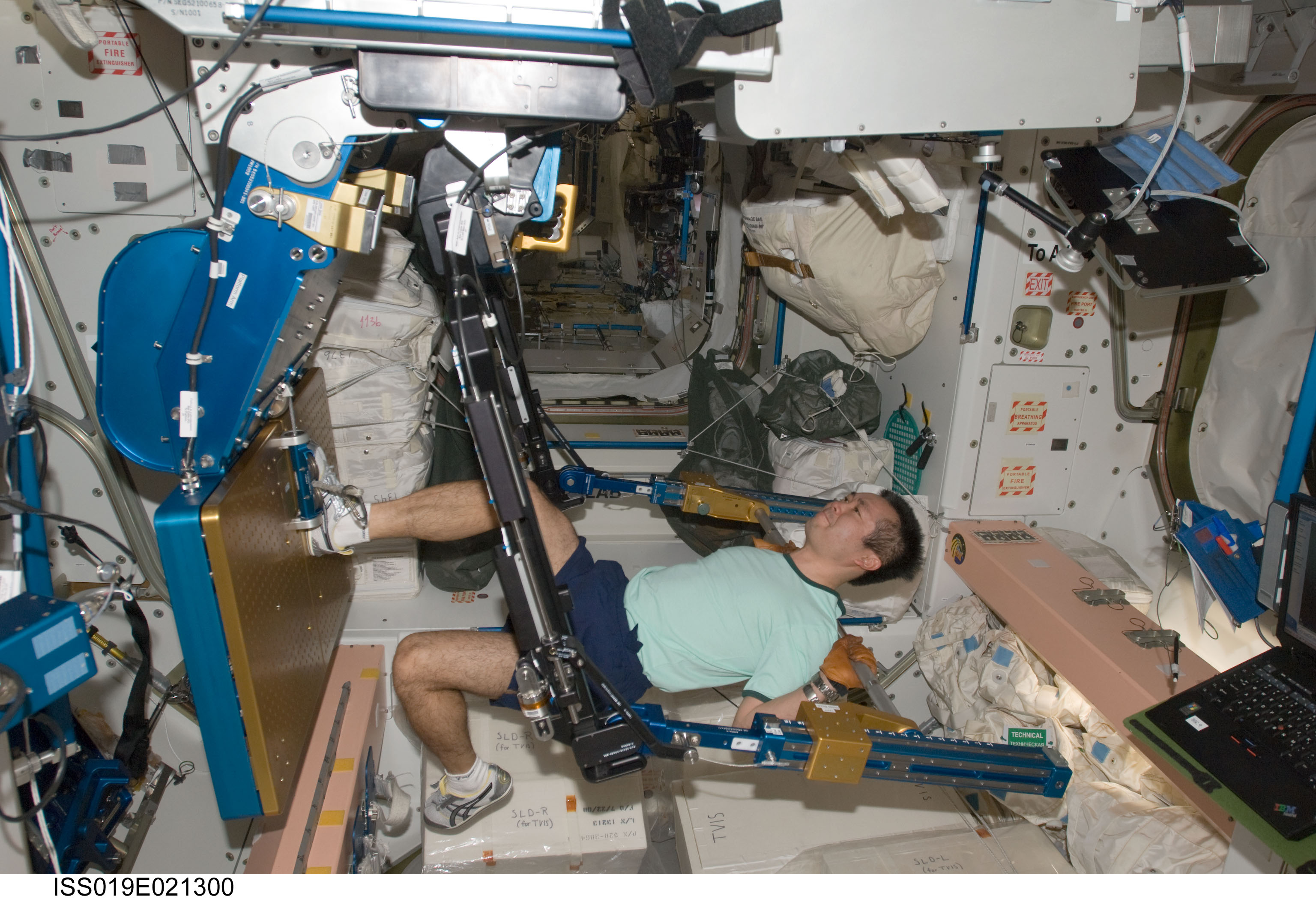Bone loss is a huge problem for people working in zero or
very low gravity. The more time a person spends in such an environment, the worse
the problem can get. Scientists have tried to mitigate this loss by adding
exercise equipment to space stations, but it hasn’t been particularly
successful. In 2008, the Advanced Resistive Exercise Device (ARED) was added to
the International Space Station (ISS). Scott Smith from NASA and his colleagues
were interested in whether this new device, in conjunction with controlled
nutrition, could decrease or eliminate bone loss in astronauts.
Japan Aerospace Exploration Agency (JAXA) astronaut Koichi
Wakata, Expedition 19/20 flight engineer, exercises using the advanced
Resistive Exercise Device (aRED) in the Unity node of the International Space
Station.
Credit: NASA.
Thirteen astronauts who spent
between 48 and 215 days aboard the ISS between 2006 and 2009 were the subjects
of the experiments. They were each given specific exercise protocols to follow
and asked to record what they ate. At various times before, during and after
their missions, they were subjected to bone density and blood tests.
The ARED has distinct advantages
over previous space exercise machines in that it allows for more consistent
load-bearing and a wider range of movements. But would that make enough of a difference? Well, the results are
in: astronauts using the ARED can avoid bone loss, as long as they also consume
enough calories and get enough vitamin D.
This news is especially encouraging
for anyone who dreams of participating in a mission to MARS. Astronauts on the
ISS may be able to return to Earth if their health becomes compromised, but
MARS explorers will have no such option.
Commander Scott Kelly demonstrates
the ARED below:

No comments:
Post a Comment